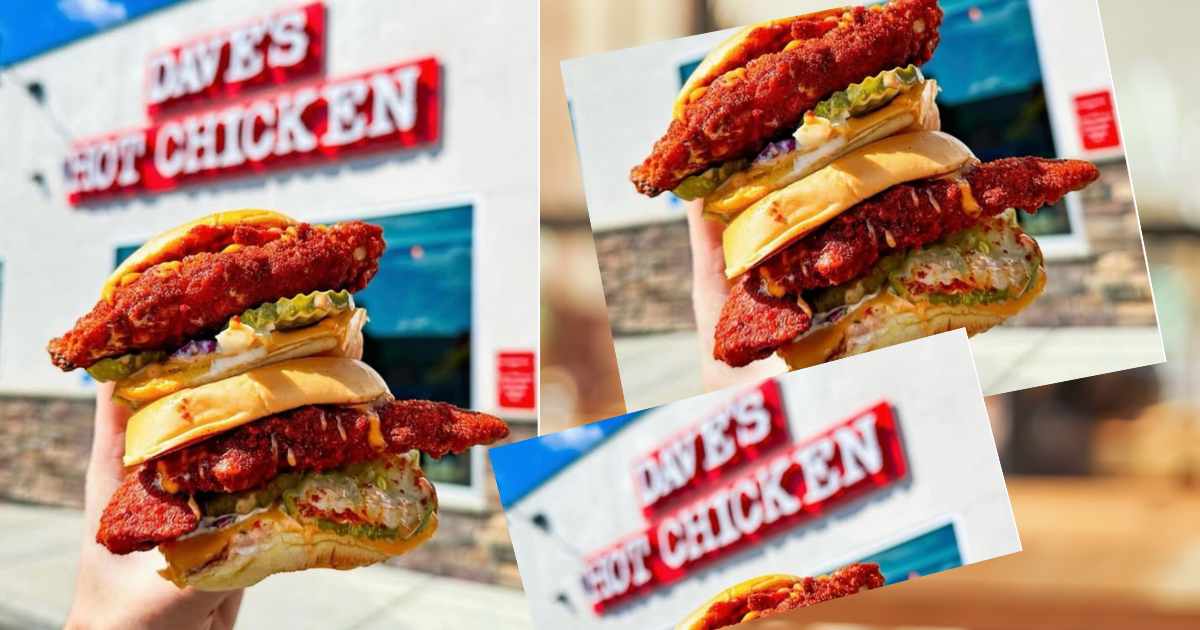Dave’s Hot Chicken, based in California, is a great example of how we business owners MUST constantly adapt and evolve to the market around us. This is what we signed up for. It’s no easy, but it’s essential. The WSJ wrote about them here.
Running a business has never been easy. It requires vision, dedication, and the ability to pivot when faced with unexpected challenges. Whether it’s rising costs, shifting consumer preferences, or new regulations, business owners who adapt are the ones who survive—and thrive. Adaptability isn’t just a trait; it’s a skill that must be continuously refined.
One of the most significant hurdles in recent years has been the rapid increase in labor costs, particularly in states like California, where the minimum wage for fast-food workers jumped to $20 an hour. While this could have spelled disaster for some, businesses like Dave’s Hot Chicken found ways to adjust, proving that resilience and strategic thinking can turn obstacles into opportunities. Their approach offers a playbook for business owners everywhere on how to navigate uncertain economic terrain.
Challenges Are Inevitable—How You Respond Makes the Difference
Every small business owner will face hurdles, whether it’s economic downturns, supply chain disruptions, or workforce shortages. What sets successful businesses apart is their willingness to analyze, adapt, and act. When Dave’s Hot Chicken realized their labor costs were rising, they didn’t just absorb the hit—they reimagined their operations and found innovative ways to cut costs without sacrificing quality or customer experience.
Here’s what small business owners can learn from their response:
1. Automate and Streamline Where Possible
One of the first changes Dave’s Hot Chicken made was introducing industrial dishwashing machines to replace manual labor. This move eliminated a tedious, time-consuming task and allowed employees to focus on more valuable work, improving overall kitchen efficiency.
For small business owners, automation isn’t just for big corporations. Consider:
- Using AI-powered chatbots for customer service to handle routine inquiries and improve response times.
- Implementing self-checkout kiosks or mobile ordering to reduce wait times and labor needs.
- Investing in software that automates scheduling, payroll, or inventory management to save time and reduce errors.
- Exploring robotic solutions for repetitive, labor-intensive tasks in industries like manufacturing and food service.
By strategically implementing technology, businesses can reduce costs while improving efficiency and customer satisfaction.
2. Adjust Offerings to Maximize Profitability
Another key strategy Dave’s Hot Chicken used was rethinking their menu. Instead of simply raising prices across the board, they introduced new, high-margin items like loaded fries and frozen Slusher drinks—small tweaks that led to significant revenue growth. These menu additions created fresh demand while allowing the company to offset rising labor costs.
Small business owners should constantly evaluate their offerings:
- Are there premium versions of your product or service that customers would pay more for?
- Could you bundle products to increase perceived value and boost average order size?
- Are there low-cost, high-margin add-ons that can enhance profitability with minimal expense?
- Are there new trends or customer preferences that your business can capitalize on?
A small pivot in how you present and price your products can make a big difference in profitability.
3. Optimize Pricing Without Losing Customers
Price increases are sometimes unavoidable, but they must be done strategically. Dave’s Hot Chicken gradually raised menu prices by 8% over time, ensuring customers weren’t driven away by sudden sticker shock. They also introduced new value-focused options, ensuring there was something for every price-conscious diner.
For small business owners, consider:
- Incremental price adjustments rather than one large increase to minimize customer pushback.
- Adding value rather than just increasing costs—like improved packaging, loyalty rewards, or exclusive deals.
- Focusing on high-value customers who are less price-sensitive and more likely to appreciate quality and service.
- Experimenting with dynamic pricing based on demand fluctuations or offering discounts during slow periods.
Small tweaks in pricing strategy can help you maintain customer loyalty while ensuring your business remains profitable.
4. Rethink Operational Efficiency
To cut down on unnecessary labor, Dave’s Hot Chicken outsourced cleaning tasks, simplified food prep, and even tested a robotic fry cooker. These changes saved each restaurant $100,000 annually—a massive win in an industry with tight margins.
As a small business owner, take a hard look at your operations:
- Are there tasks you or your employees are spending too much time on that could be outsourced or automated?
- Could you negotiate better terms with suppliers or find alternative materials that save money?
- Are you leveraging technology to simplify processes and reduce manual work?
- Are you maximizing space and equipment usage to improve efficiency and lower operational costs?
Even small adjustments in how you operate can add up to substantial cost savings over time.
5. Don’t Just React—Plan for the Future
Perhaps the biggest takeaway from Dave’s Hot Chicken’s response to wage increases is this: They didn’t just react—they planned. By holding emergency meetings, analyzing every expense, and proactively adjusting their business model, they ensured they weren’t just surviving the changes but setting themselves up for future success.
Small business owners should adopt the same mindset:
- Always have a contingency plan for major business disruptions.
- Stay ahead of industry trends and anticipate changes before they happen.
- Continuously analyze your business and seek out new revenue opportunities.
- Develop a culture of adaptability among employees so they are open to change when necessary.
The most successful entrepreneurs aren’t just problem-solvers—they’re problem preventers who are always thinking ahead.
6. Explore New Revenue Streams
One of the reasons Dave’s Hot Chicken was able to withstand rising labor costs was their willingness to diversify revenue. They focused on expanding catering services, creating high-value meal bundles, and pushing late-night sales to capture different customer segments.
As a small business owner, consider:
- Expanding into e-commerce if your product allows for it.
- Offering exclusive services or premium experiences to increase revenue per customer.
- Licensing your brand, products, or intellectual property for additional income.
- Creating digital products or courses related to your expertise.
By diversifying income streams, your business becomes more resilient to external challenges.
Final Thoughts: Adaptation Is the Key to Survival
The reality of business is that challenges will never stop coming. Whether it’s rising costs, new competitors, or shifting consumer habits, the ability to pivot, innovate, and optimize will always be what separates thriving businesses from those that struggle.
Dave’s Hot Chicken proved that with smart decision-making, even a massive increase in labor costs doesn’t have to spell disaster. By embracing technology, rethinking pricing, optimizing operations, and planning for the future, they turned a challenge into a growth opportunity.
As a small business owner, the question isn’t if you’ll face obstacles—it’s how you’ll respond when you do. Are yo











